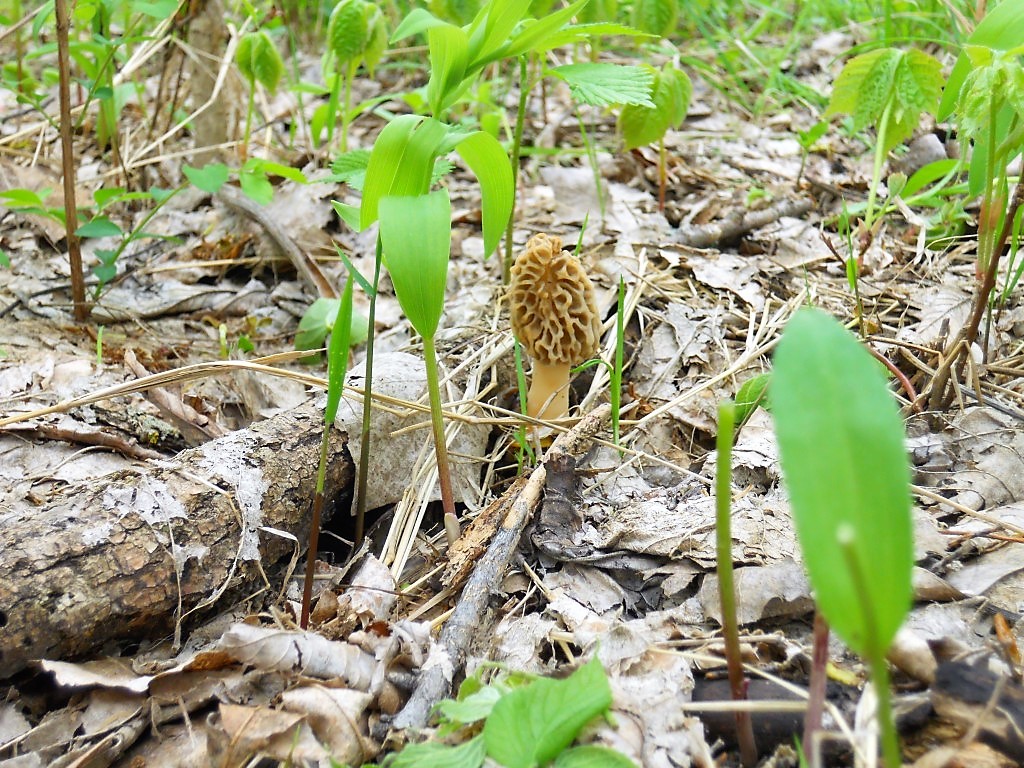Tersh Kepler of Omaha, NE, one of the Midwest’s foremost morel mushroom hunting experts, is hoping for two things these early spring days: More what he calls “liquid gold” and warm rays from BOB in the sky.
The “liquid gold” would be more measurable precipitation in the form of rain and the warm rays from BOB would be the heat provided by the big orange ball in the sky, the sun.
Kepler says the conditions have been very windy and are still dry at this point in Nebraska for a good morel mushroom hunting year and temperatures have been on the chilly side. Besides warm sunshine to heat temperatures just below ground level, morels need an abundance of timely moisture.
Most of Nebraska’s landscape remains dry and is still technically in a drought, according to University of Nebraska-Lincoln State Climatologists.
Warm sub-soil temps and adequate moisture are critical for morels to emerge like any other year. “We’ll see what happens from here on out with the weather. It’s Nebraska, after all,” remarks Kepler.

Kepler will be closely monitoring not only the weather but his yard for the appearance of dandelions. Why? Because, that will be his first sign, his trigger that morel mushrooms have most likely popped up in his river bottom woodlands.
Many folks in Nebraska will soon be antsy to head to their morel mushroom picking spots along wooded river and creek bottoms for the tasty spring delicacy. But, when will the morels emerge?
That’s the million dollar question.
With the morel mushroom, folklore seems to collide and almost mix with science.
Kepler says the sprouting of dandelions in his Omaha yard will be one of the primary indicators of morels appearing, however, he knows there is more to it.
Whether vigilant for dandelion flowers, tree buds, blooming lilacs or flowering woodland phlox, morel mushrooms are truly at the whims of nature. Their arrival is determined by weather, soil temperature, moisture, the amount of organic matter in a given wooded location and a few secrets the natural world keeps to itself.

Kepler has been hunting morel mushrooms, wild asparagus and other wild edibles for decades, more than 50 years actually. He is on the public speaking circuit and even has his own website dedicated to morel mushroom hunting and foraging supplies: www.morelmushroomsupply.com

Kepler adds that ground temperatures, at least in eastern Nebraska, need to be from 55-60 degrees Fahrenheit (F) about 5-8 inches below the surface for morels to spring, and Kepler intently watches and notes the temps on Internet sites and with subsoil thermometers in different locations. He also hones in to what is happening with the harvest of morels in the states to the south of Nebraska.”I especially watch what takes place with the emergence of morels in Missouri,” he points out. “That will indicate to me that our morel picking season in southeast Nebraska is right around the corner.”
If the soil temperature increases too rapidly, morels will quickly appear but have a shorter growing season. If there is much rain, the morels tend to have a longer growing season.
Morels grown under controlled/managed conditions for commercial purposes fruit when the soil reaches a consistent temperature of approximately 53 degrees Fahrenheit. When it comes to air temperatures for the morels to push through the soil, ideally they should be in the 60s and 70s in the daytime and no lower than 45 to 50 degrees Fahrenheit (F) at night.

Kepler is cautious about predicting the arrival of morel mushrooms in river bottom woods yet he offers time periods.
Historically, he says, morels usually show up around Tax Deadline Day which is April 18th this year, but there is much variance. Generally, morels are found in mid to late April or early May along the Elkhorn, Platte River and Missouri bottom woodlands, depending on the year. In hilly forested areas above those rivers, the time around Mother’s Day is typically key to find morels.
Now you know when to start checking your morel mushroom hunting spots, don’t you? Better keep an eye out for those dandelions in your yard, too. Happy hunting! GW.

The post What is it going to take for morel mushrooms to emerge? appeared first on Nebraskaland Magazine.
















